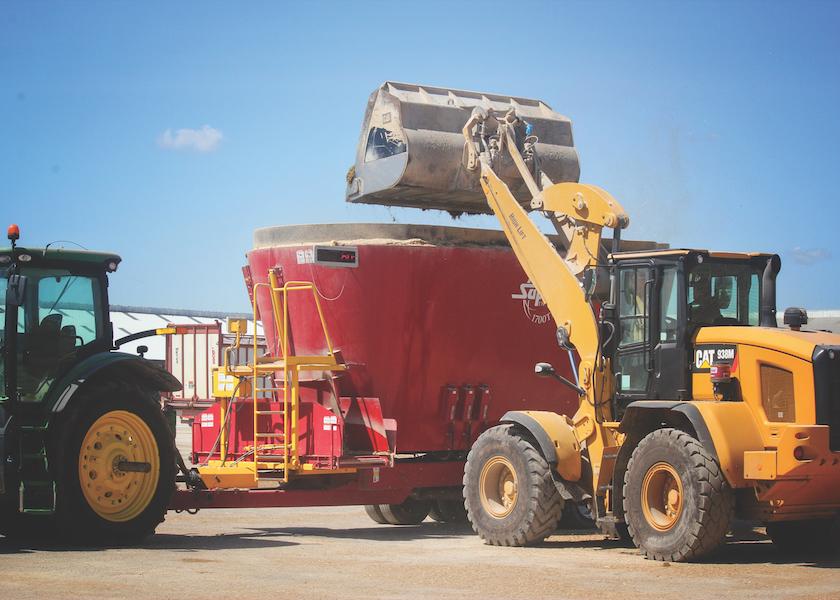Consistent Cow Routines Depend on the Right Mix

TMR consistency and composition are important to efficient and reliable nutrient delivery in lactating cow rations. But the impact of those factors actually can span much further.
“Changes in particle size and mix quality cause changes in sorting behavior, and that changes eating, resting, and rumination time, which in turn can lower milk production,” said John Maltman, ruminant nutritionist with Highline Manufacturing of Saskatchewan, Canada. Maltman shared his ration- mixing advice on a 2021 World Ag Expo webinar.
“Cows respond to physical characteristics of the diet as well as nutrient levels,” Maltman shared. He said dry-matter intake (DMI) is a function of meal size and frequency, which in turn are affected by animal and dietary factors affecting hunger and satiety. Specific physical and chemical characteristics of rations that can affect DMI include:
- Fiber content
- Particle size
- Particle fragility
- Silage fermentation products
- Concentration and type of fat; and
- Amount of protein and its degradability
Maltman said consistent cut lengths ranging from 5 to 19 mm won’t deter consistent intake, but poorly mixed rations will. Causes of such mixing issues might be things like faulty equipment or settings; frozen silage; or using extremely long-stemmed forages.
“In those situations, eating time changes, because cows detect that difference,” stated Maltman. He said inconsistency in mixing quality can negatively affect DMI by reducing additional intake that would otherwise be possible, because cows spend more time sorting and less time eating.
DMI then spirals downward because cows leave the bunk before they have maximized their intake. Satiety is triggered at about 88% of total rumen capacity. When cows stop eating at this stage because they feel “full enough,” there still is about 3 gallons of rumen headspace available that they could fill if the ration were more appealing and they weren’t preoccupied with sorting.
In a recent field survey of commercial Canadian dairies, average day-to-day variability in TMR rations was greater for physical characteristics (particle size distribution) than actual ration composition.
“Consistent mixing will maximize resting time and voluntary intake; inconsistent mixes and changeability will affect net daily intake,” Maltman declared.
Maltman shared data from a cow resting study conducted at the Miner Institute in New York. Those researchers found that each hour of additional resting time over a baseline resulted in a daily gain of 3.7 pounds of additional milk per cow.
While factors like social structure, feeding space provision, and ventilation also influence the potential for maximum DMI, Maltman said achieving a consistently blended mix of every TMR batch, every day, still is paramount to capturing a herd’s full potential for intake and milk production.







